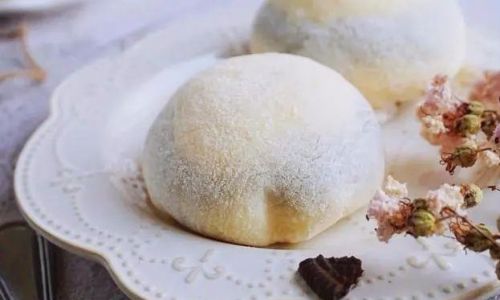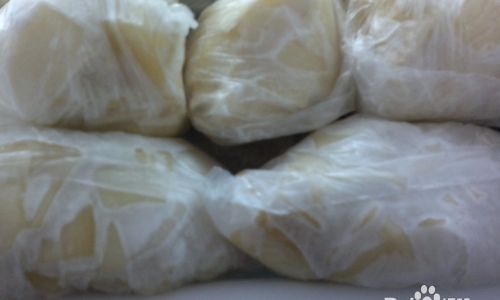Introduction
In the vast culinary landscape, mushrooms have always held a special place, offering a unique blend of earthy flavors and nutritional benefits. Among the myriad varieties, Eringi, commonly known as King Oyster Mushroom or Pleurotus Eryngii, stands out due to its meaty texture and rich, savory taste. This elegant mushroom, native to warm and temperate regions, is not just a delight for vegetarians seeking meat-like satisfaction but also for anyone who appreciates the subtle nuances of mushroom flavors. One of the simplest yet most rewarding ways to enjoy Eringi is in a soup. This article will guide you through the process of crafting a delicious Eringi mushroom soup, highlighting key steps, ingredients, and tips to ensure your dish is both flavorful and satisfying.

Understanding Eringi Mushrooms
Before diving into the recipe, let’s delve briefly into what makes Eringi mushrooms special. These mushrooms have a thick, firm stalk and a small, dense cap, which gives them a meaty texture when cooked. Their flavor is robust, with hints of nuts and a slightly sweet undertone, making them perfect for dishes that require long, slow cooking to develop deep, complex flavors. Eringi mushrooms are also rich in nutrients, including vitamins, minerals, and antioxidants, making them a healthy addition to any meal.
Choosing the Right Ingredients
When making a mushroom soup, the quality of your ingredients can make or break the dish. Here’s a list of essential and optional ingredients you’ll need:
- Eringi Mushrooms: Fresh or dried, though fresh mushrooms will yield the best results.
- Vegetable Stock: A good quality vegetable stock is crucial for the soup’s base. You can make your own or use a store-bought variety, but ensure it’s low in sodium and rich in flavor.
- Onions and Garlic: These aromatic vegetables form the foundation of the soup’s flavor.
- Fresh Herbs: Thyme, rosemary, and bay leaves add depth and complexity.
- Cream or Coconut Milk: For a richer, creamier texture. You can use dairy cream or a plant-based alternative like coconut milk.
- Carrots, Celery, and Potatoes: These vegetables add sweetness, body, and creaminess to the soup without overpowering the mushroom flavor.
- Salt and Pepper: To taste.
- Optional Ingredients: You can add a splash of white wine, a handful of spinach or kale, or a dollop of sour cream for added complexity and creaminess.
Preparing the Mushrooms
- Cleaning: Start by gently wiping the mushrooms with a damp cloth or paper towel. Avoid soaking them in water, as this can make them soggy and waterlogged.
- Slicing: Depending on the size of your mushrooms, slice them into thin pieces or small chunks. The goal is to ensure they cook evenly and release their flavors into the soup.
- Sautéing: In a large pot or Dutch oven, heat a bit of olive oil over medium heat. Add the sliced mushrooms and cook until they are golden brown and have released their juices. This step is crucial for developing the soup’s flavor base.
Building the Soup Base
- Aromatics: Once the mushrooms are browned, remove them from the pot and set them aside. In the same pot, add chopped onions and garlic. Cook until the onions are translucent and the garlic is fragrant, being careful not to burn the garlic as it can turn bitter.
- Vegetables: Add diced carrots, celery, and potatoes to the pot. Cook for a few minutes until they start to soften, stirring occasionally.
- Stock: Pour in the vegetable stock, making sure it covers all the vegetables by at least an inch. Add the thyme, rosemary, and bay leaves.
- Simmering: Bring the mixture to a boil, then reduce the heat to low and let it simmer for about 20-30 minutes, or until the vegetables are tender.
Incorporating the Mushrooms
- Reintroducing Mushrooms: After the vegetables have cooked, add the sautéed mushrooms back into the pot. Stir to combine.
- Creaminess: If you’re using cream or coconut milk, now is the time to add it. Stir well to ensure it’s evenly distributed throughout the soup.
- Taste and Season: Taste the soup and adjust the seasoning with salt and pepper as needed. Remember, the flavors will continue to develop as the soup sits, so err on the side of caution with seasoning.
Finishing Touches
- Herbs: For a fresh burst of flavor, remove the pot from heat and stir in some chopped fresh parsley, chives, or dill.
- Texture: If you like, you can add a handful of spinach or kale leaves. They will wilt and add both color and nutrition to your soup.
- Garnish: Serve the soup hot, garnished with a dollop of sour cream, a sprinkle of fresh herbs, or a pinch of nutritional yeast for a cheesy flavor without the dairy.
Serving Suggestions

A bowl of warm, hearty Eringi mushroom soup is a meal in itself, but you can elevate it with a few simple sides:
- Bread: A slice of crusty bread or garlic bread is always a welcome accompaniment, soaking up the rich broth.
- Salad: A light, refreshing salad with mixed greens, cherry tomatoes, and a vinaigrette dressing can balance out the richness of the soup.
- Cheese: A sprinkle of grated Parmesan or a slice of aged cheddar can add a layer of umami and creaminess.
Storage and Reheating
If you have leftovers, or if you’re making the soup in advance, here’s how to store and reheat it:
- Storage: Let the soup cool to room temperature, then transfer it to an airtight container. Store it in the refrigerator for up to 3 days.
- Reheating: To reheat, place the soup in a pot on the stove over medium-low heat, stirring occasionally until it’s warm throughout. You can also reheat individual portions in the microwave, but be careful not to overheat, as this can cause the soup to split.
Troubleshooting Tips
- Soup Too Thin: If your soup is too thin, you can thicken it by adding a cornstarch slurry (a mixture of cornstarch and water) or by simmering it uncovered for a longer period to reduce the liquid.
- Soup Too Thick: If it’s too thick, simply add more stock or water, a little at a time, until you reach the desired consistency.
- Bitter Flavors: If the garlic or onions have turned bitter, remove them from the pot before adding the stock and start fresh with new aromatics.
Conclusion
Crafting a delicious Eringi mushroom soup is a rewarding culinary endeavor that combines the best of flavor, texture, and nutrition. By following the steps outlined in this article, you’ll be able to create a dish that is not only satisfying but also impressive, making it perfect for a cozy dinner at home or a special occasion. Remember, the key to a successful mushroom soup lies in the quality of your ingredients, the careful cooking of the mushrooms, and the balance of flavors. With these principles in mind, you’ll be well on your way to mastering the art of mushroom soup making.
Moreover, the versatility of this recipe allows for endless variations. Feel free to experiment with different herbs, spices, and vegetables to suit your taste preferences. Whether you’re a seasoned chef or a home cook new to the world of mushroom soups, this recipe promises to deliver a delightful and satisfying experience every time. So, gather your ingredients, roll up your sleeves, and embark on a culinary journey that will leave you with a warm, hearty bowl of Eringi mushroom soup—a true testament to the magic of mushrooms.





0 comments